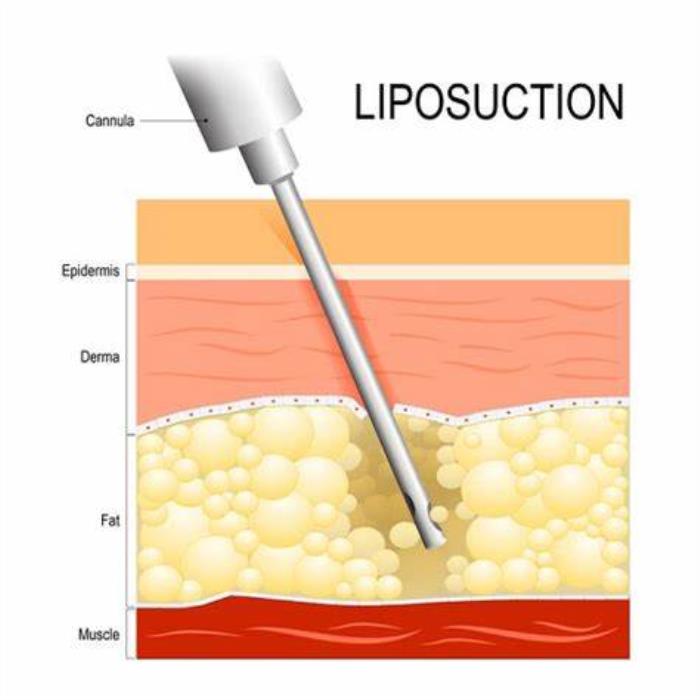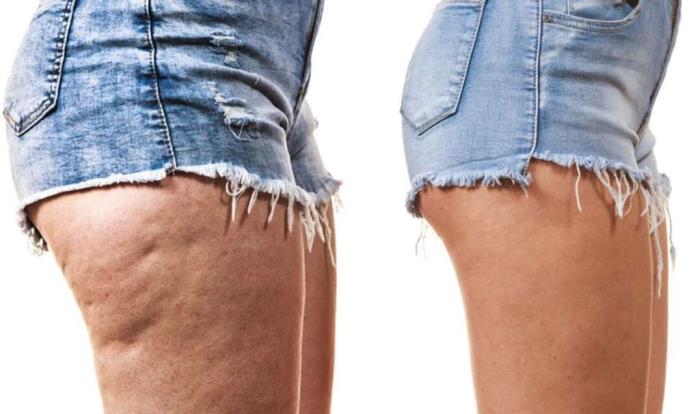Cellulite refers to the dimpled, lumpy appearance of skin that occurs when fat deposits push through connective tissue beneath the skin. It commonly appears on the thighs, hips, buttocks, and abdomen, affecting both men and women, although it is more prevalent in women due to differences in fat distribution and skin structure. While cellulite is harmless, it can cause cosmetic concerns for those seeking smoother skin. The development of cellulite is influenced by factors such as genetics, age, hormonal changes, and lifestyle choices, making it a complex condition to address.

Can Liposuction Help Reduce Cellulite?
Liposuction, while effective at removing fat, is not a guaranteed solution for reducing cellulite. Cellulite is caused by structural changes beneath the skin, involving fibrous connective tissues and fat, and liposuction alone may not address the underlying causes of cellulite. In some cases, liposuction can even make cellulite more noticeable due to changes in skin texture after fat removal. However, combining liposuction with other treatments, such as laser therapy or radiofrequency, may help improve the appearance of cellulite by addressing both fat and skin quality.
How Liposuction Works: A Quick Overview
Liposuction is a surgical procedure that removes excess fat from specific areas of the body to create a more contoured appearance. During the procedure, small incisions are made, and a thin tube called a cannula is inserted to suction out fat deposits. Liposuction is often performed under general or local anesthesia, depending on the area being treated and the extent of the procedure. While liposuction is highly effective at fat reduction, it does not directly address skin issues such as cellulite or loose skin.

The Difference Between Fat Reduction and Cellulite Treatment
Fat reduction and cellulite treatment are two distinct processes that target different concerns. Fat reduction, such as through liposuction, removes excess fat cells to improve body contours, but it does not necessarily improve the appearance of cellulite. Cellulite treatment focuses on smoothing the skin’s surface by addressing the fibrous bands that cause the dimpled texture. Non-surgical treatments like radiofrequency, laser therapy, and subcision are specifically designed to target these structural issues and improve skin texture. While both fat reduction and cellulite treatment can enhance body appearance, they serve different purposes.
Liposuction and Its Impact on Skin Texture
Liposuction can have varying effects on skin texture, depending on factors like skin elasticity and the amount of fat removed. In individuals with good skin elasticity, liposuction can result in smoother, firmer skin. However, in cases where the skin is less elastic or large amounts of fat are removed, liposuction may lead to skin irregularities, such as sagging or dimpling. This is why liposuction may not always improve cellulite and can sometimes make it more prominent. For patients concerned about skin texture post-liposuction, combining the procedure with skin-tightening treatments can help enhance the overall results.
Common Misconceptions About Liposuction and Cellulite
Many people believe that liposuction is an effective treatment for cellulite, but this is a misconception. Liposuction is designed to remove fat from specific areas of the body, while cellulite is caused by a combination of factors, including fat distribution, skin structure, and underlying connective tissue. This misunderstanding can lead to unrealistic expectations and disappointment if liposuction does not significantly improve the appearance of cellulite.
Why Liposuction May Not Be the Best Solution for Cellulite
Liposuction is not a one-size-fits-all solution for cellulite because it primarily targets fat reduction, not the underlying structural issues that cause cellulite's dimpled appearance. Removing fat can sometimes make cellulite more noticeable, as the skin may sag or lose elasticity in the treated area. It’s essential for patients to understand that other treatments specifically designed for cellulite may provide better results.
Non-Surgical Alternatives for Treating Cellulite
There are several non-surgical alternatives for treating cellulite that may be more effective than liposuction. Options include radiofrequency treatments, ultrasound therapy, and laser treatments, which can help stimulate collagen production and improve skin texture. These methods target the fibrous bands beneath the skin that cause the appearance of cellulite without the need for invasive surgery.
How Liposuction Can Worsen the Appearance of Cellulite
In some cases, liposuction can inadvertently worsen the appearance of cellulite. When fat is removed, it may create a more uneven surface due to changes in skin tension and elasticity. This can lead to an increase in the visibility of cellulite, particularly in individuals with thinner skin or less elastic tissue, highlighting the importance of consulting with a qualified surgeon who understands these risks.
Skin Tightening Procedures to Complement Liposuction
To address potential skin laxity following liposuction, many patients opt for complementary skin tightening procedures. Treatments such as laser skin tightening or radiofrequency can enhance the overall results by promoting collagen production and improving skin elasticity. Combining these treatments with liposuction can lead to smoother, firmer skin, creating a more aesthetically pleasing outcome.

Understanding the Role of Genetics in Cellulite Development
Genetics plays a significant role in the development of cellulite. Some individuals may be genetically predisposed to have a higher percentage of body fat or less elastic skin, which can exacerbate the appearance of cellulite. Understanding the genetic factors at play can help individuals manage their expectations regarding the effectiveness of treatments and guide them toward the most suitable options.
The Importance of Post-Liposuction Skin Care
Proper post-liposuction skin care is crucial for achieving the best possible results. Patients should follow their surgeon's recommendations regarding skin care routines, including moisturizing and using products that promote healing. This can help improve skin texture and minimize the risk of complications, contributing to a smoother overall appearance.
Other Treatments to Pair with Liposuction for Better Results
To enhance the outcomes of liposuction, patients may consider pairing it with other treatments like cellulite-targeting therapies, skin tightening procedures, or lymphatic drainage massages. Combining these treatments can help address multiple concerns, leading to improved body contouring and skin texture.
Long-Term Expectations for Cellulite After Liposuction
Patients should have realistic long-term expectations regarding the appearance of cellulite after liposuction. While some fat may be permanently removed, new weight gain or aging can still impact the skin's appearance and texture. Maintaining a healthy lifestyle is essential to sustaining results and managing cellulite over time.
Real Patient Experiences: Liposuction and Cellulite Outcomes
Real patient experiences can provide valuable insights into the effectiveness of liposuction for cellulite. Many individuals report varying results, with some experiencing improved body contour while others notice little to no change in their cellulite. These stories emphasize the importance of setting realistic expectations and understanding that liposuction may not be the best solution for everyone.
Factors That Influence the Appearance of Cellulite After Liposuction
Several factors can influence the appearance of cellulite after liposuction, including skin elasticity, body composition, and overall health. Patients with higher skin elasticity are likely to see better outcomes, while those with thinner skin or significant weight fluctuations may experience more noticeable cellulite post-surgery. Genetics also plays a crucial role; individuals predisposed to cellulite may not see a significant improvement. Additionally, the technique used during liposuction can affect how smooth the skin appears after the procedure.
The Role of Diet and Exercise in Managing Cellulite Post-Surgery
Post-surgery, maintaining a healthy diet and regular exercise is essential for managing the appearance of cellulite. A balanced diet rich in antioxidants, healthy fats, and hydration can support skin health and elasticity. Incorporating strength training and cardiovascular exercises can help reduce overall body fat and improve muscle tone, which may minimize the visibility of cellulite. Consistency in these lifestyle choices plays a critical role in achieving long-term results after liposuction.
Choosing the Right Treatment for Cellulite Reduction
When selecting a treatment for cellulite reduction, it’s vital to consider individual goals, the severity of cellulite, and skin type. Options range from non-surgical treatments like radiofrequency and laser therapy to more invasive procedures. Consulting with a qualified provider can help patients understand the pros and cons of each treatment and determine the best approach for their specific needs and desired outcomes.
New Techniques for Minimizing Cellulite During Liposuction
Recent advancements in liposuction techniques aim to minimize the risk of cellulite formation post-surgery. Techniques such as the tumescent method and laser-assisted liposuction can help preserve surrounding tissues and promote better skin retraction. These innovative approaches not only enhance fat removal but also contribute to smoother results, reducing the likelihood of post-operative cellulite visibility.
Legal and Ethical Considerations in Liposuction Surgery
Get informed about the legal and ethical aspects of liposuction surgery, including patient rights, informed consent, and the responsibilities of healthcare providers. Understanding these considerations ensures that patients are protected and aware of their rights during the surgical process.
How to Prepare Your Body for Liposuction
Discover essential tips on preparing your body for liposuction, including dietary recommendations, maintaining a healthy weight, and quitting smoking. Proper preparation can significantly enhance your recovery and overall results, leading to a smoother surgical experience.
Best Liposuction Treatment in India
The Best Liposuction Treatment in India is performed by expert surgeons who utilize advanced techniques to ensure optimal outcomes for patients, offering a personalized treatment plan tailored to individual health needs.
Best Liposuction Hospitals in India
The Best Liposuction Hospitals in India are equipped with cutting-edge technology and facilities, providing top-notch care, including pre-surgery consultations, surgical expertise, and post-operative recovery support to ensure a smooth patient journey.
Liposuction Cost in India
When considering the Liposuction Cost in India, patients benefit from affordable and transparent pricing at leading hospitals, which offer cost-effective treatment options without compromising the quality of care.
Best Liposuction Doctors in India
The Best Liposuction Doctors in India are highly experienced in performing the surgery, utilizing a patient-centric approach that ensures personalized care, precise surgical techniques, and dedicated follow-up care to enhance recovery.
FAQs About Liposuction and Cellulite
1. Can liposuction completely eliminate cellulite?
No, liposuction primarily targets fat removal and may not effectively treat cellulite. It's essential to discuss other treatment options for cellulite with your surgeon.
2. How can I improve the appearance of cellulite after liposuction?
Maintaining a healthy diet, staying active, and considering additional treatments like radiofrequency or laser therapy can help improve the appearance of cellulite post-liposuction.
3. Are there specific techniques that reduce the likelihood of cellulite after liposuction?
Yes, newer liposuction techniques, such as laser-assisted liposuction, focus on preserving surrounding tissues and promoting better skin elasticity, which can help minimize cellulite.
4. How long after liposuction should I wait to start treatments for cellulite?
It’s generally recommended to wait until your body has healed completely, typically around 6 to 12 weeks post-surgery, before starting any cellulite treatments. Always consult your surgeon for personalized advice.
5. Will weight gain after liposuction worsen the appearance of cellulite?
Yes, gaining weight after liposuction can increase the visibility of cellulite, especially if the weight is gained in areas where cellulite was present prior to surgery. Maintaining a stable weight is crucial for sustaining results.